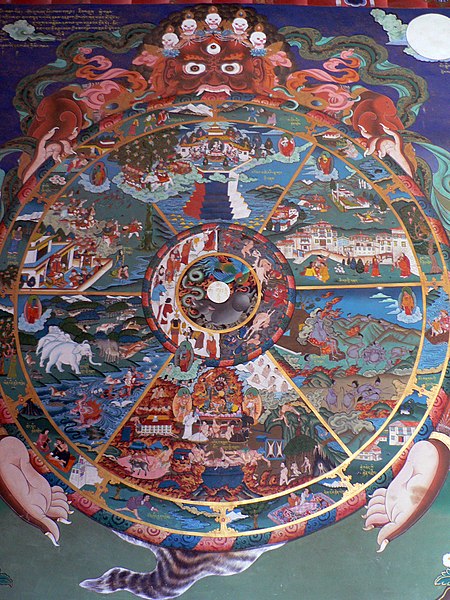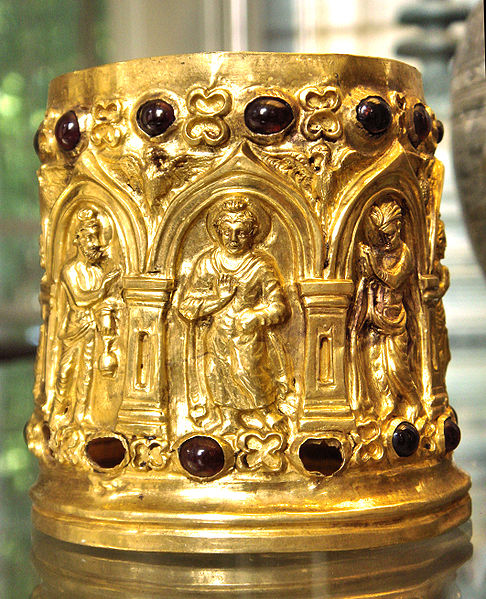Buddhist ethics are traditionally based on the enlightened perspective of the Buddha. In Buddhism, ethics or morality are understood by the term Śīla or sīla (Pāli). Śīla is one of three sections of the Noble Eightfold Path. It is a code of conduct that embraces a commitment to harmony and self-restraint, primarily motivated by nonviolence or freedom from causing harm. It has been variously described as virtue, moral discipline and precept.
The Buddhist king Ashoka built pillars throughout the Indian subcontinent inscribed with edicts promoting Buddhist moral virtues and precepts.
The bhavacakra (wheel of life) shows the realms of karmic rebirth, at its hub are the three poisons of greed, hatred and delusion.
In the Zen Buddhist initiation ceremony of Jukai, initiates take up the Bodhisattva Precepts.
Giving (Dana) is an important Buddhist virtue. The community of monastics is seen as the most meritorious field of karmic fruitfulness.
Siddhartha Gautama, most commonly referred to as the Buddha, was a wandering ascetic and religious teacher who lived in South Asia during the 6th or 5th century BCE and founded Buddhism. According to Buddhist legends, he was born in Lumbini, in what is now Nepal, to royal parents of the Shakya clan, but renounced his home life to live as a wandering ascetic. Buddhists believe that after leading a life of mendicancy, asceticism, and meditation, he attained nirvana at Bodh Gaya in what is now India. The Buddha then wandered through the lower Indo-Gangetic Plain, teaching and building a monastic order. Buddhist tradition holds he died in Kushinagar and reached parinirvana, final nirvana.
Statue of the Buddha, preaching his first sermon at Sarnath. Gupta period, c. 5th century CE. Archaeological Museum Sarnath (B(b) 181).
The Buddha, Tapa Shotor monastery in Hadda, Afghanistan, 2nd century CE
One of the earliest anthropomorphic representations of the Buddha, here surrounded by Brahma (left) and Śakra (right). Bimaran Casket, mid-1st century CE, British Museum.
Māyā miraculously giving birth to Siddhārtha. Sanskrit, palm-leaf manuscript. Nālandā, Bihar, India. Pāla period








